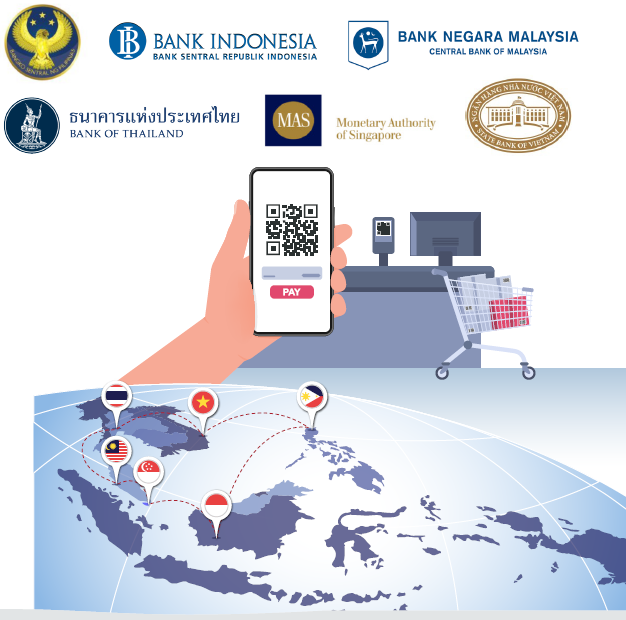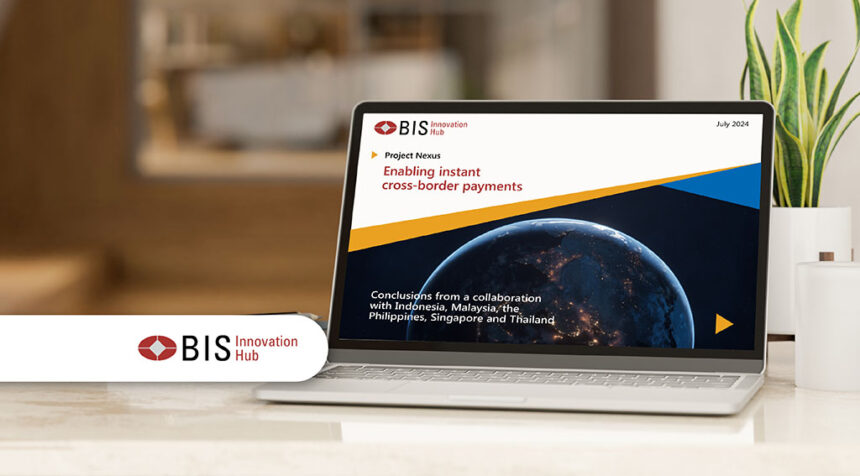of Bank for International Settlements (BIS) and its partners have unveiled a comprehensive blueprint for the third phase of Project Nexus, which aims to leverage the power of domestic Instant Payments Systems (IPS) to solve long-standing challenges in international payments.
This ambitious initiative aims to transform cross-border payments first in Southeast Asia (ASEAN), then expand across the Asia Pacific (APAC) region and eventually globally.
How does Project Nexus work?
Nexus is designed to standardize how domestic payment systems connect to each other across borders. Instead of creating a custom connection for each new country they want to connect to, operators of instant payment systems only need to create a single connection to Nexus. This single connection will allow their instant payment systems to reach all other countries in the network.
The potential impact of this effort is significant. Project Report Includes recently published conclusions and key findings Bank for International Settlements Innovation Hub (BISIH) The Singapore centre has a large volume of intra- and inter-ASEAN payments that can be processed through Nexus.
This is in line with the total digital payments volume reaching US$806 billion in 2022 in ASEAN’s six largest economies alone, representing a 14% annual growth by 2022. According to data from the World Economic ForumIt is expected to reach nearly US$1.2 trillion by 2025.

Source: BIS Innovation Hub Project Nexus Report
Connecting more than 5 ASEAN countries
Three European real-time settlement systems (Eurosystem’s TARGET real-time settlement and TIPS), Malaysia (Real-time Retail Payment PlatformRPP), Singapore ( Fast and Secure Transfer or FAST At the core of Project Nexus, which will serve as the foundation for a global payments and settlement system, will be collaboration among the five ASEAN countries: Indonesia, Malaysia, the Philippines, Singapore and Thailand.
These countries, collectively known as the ASEAN-5, are at the forefront of developing a strong domestic instant payments infrastructure. Project Nexus The aim is to make these systems interconnected.Creating a seamless network for cross-border trade.
While no specific figures were given, the report suggests that just linking the five ASEAN countries together could create a large market.
Moreover, as Nexus expands to other countries in the Asia-Pacific region, the network effects and economic benefits are expected to grow exponentially.

Source: BIS Innovation Hub Project Nexus Report
Increased speed and reduced costs
One of the most significant benefits of Project Nexus outlined in the report is the dramatic increase in transaction speeds.
The system aims to enable cross-border payments to reach their destination within 60 seconds in most cases, a significant improvement over traditional cross-border payment methods that can take hours or even days.
In terms of cost reduction, Project Nexus In line with the G20 Roadmap for Strengthening International Paymentshas set a goal of reducing the global average cost of cross-border payments to below 1% by the end of 2027.
While the specific fee structure has yet to be finalized, the project team has conducted extensive benchmarking to ensure that Nexus can effectively deliver cross-border payments at total costs to senders within the G20 3% target, or even lower.
Innovative FX delivery model
Project Nexus introduces a flexible FX delivery model that allows each payment service provider (PSP) to adopt the approach that works best for them: larger service providers can offer FX conversion for their own payments, while smaller service providers can use a third-party FX provider (FXP).

This model allows payment service providers to facilitate cross-border payments without having to hold multiple currencies in multiple countries, potentially reducing cost and complexity.
The Nexus model also separates the different roles that financial institutions can play in international payments. This separation encourages competition between roles, creating a level playing field and allowing smaller FX dealers to compete with larger international financial institutions.
Overcoming technical and regulatory hurdles
One of the key challenges in connecting multiple instant payment systems is that different countries have different technical standards and regulatory requirements.
Project Nexus addresses this with a standardized approach that utilizes APIs and ISO 20022 messages to facilitate communication between disparate systems. This standardization will significantly reduce the complexity and cost of integration, making it possible to connect large numbers of countries.
The project team developed a comprehensive governance framework and scheme rulebook to ensure compliance with diverse regulatory requirements.
This includes provisions for anti-money laundering (AML) and counter-terrorism financing (CFT) measures, as well as addressing differing foreign exchange regulations among participating countries.
To facilitate practical implementation, the partner central banks and instant payment system operators have agreed to establish a new organisation, the Nexus Scheme Organisation (NSO), which will be responsible for managing the rulebook and ensuring consistent application across the network.
Promoting financial inclusion and economic growth
The implementation of Project Nexus has the potential to significantly boost financial inclusion and economic growth in Southeast Asia and the Asia-Pacific region. By providing faster, cheaper and more accessible cross-border payment options, Nexus can facilitate increased trade and remittance flows between the countries involved.
For example, the project could greatly benefit millions of international migrant workers from Southeast Asian countries such as the Philippines and Indonesia.
These workers often rely on expensive remittance services to send money home, and Nexus allows them to do so instantly at a fraction of the current cost, potentially helping to keep more of their hard-earned income in reach their families.
Additionally, small and medium-sized enterprises in the region will benefit from improved access to cross-border payment services, which could enable them to participate more easily in international trade, boosting economic growth and job creation across the region.

Vietnam, Brunei and Laos We then joined the Regional Payments Connectivity (RPC) initiative.
Real-world implementation and future prospects
The BISIH Singapore Centre is now moving towards the actual implementation of Project Nexus. Having successfully completed Phase 3, the next phase will support a coalition of countries interested in adopting Nexus to connect to their domestic instant payment systems.
Phase 4 will include the participation of Bank Negara Malaysia, Bank of the Philippines, Monetary Authority of Singapore, Bank of Thailand and the domestic payment system operator, all of which cooperated in Phase 3. The Reserve Bank of India will also join, expanding the potential user base. Including India’s Unified Payments Interface (UPI)The world’s largest instant payment system.
Bank Indonesia (BI) will continue to be involved in the project as a special observer. Having participated in the third phase, BI will maintain this position and follow the next stages of the project’s development.
While the initial focus is on the five ASEAN countries, the BIS and its partner central banks hope that the actual implementation of Nexus will be global rather than regional.
To this end, the project team continues to engage with central banks and payment system operators around the world, and invites interested parties to contact them for more information about connecting to Nexus or using the Nexus Blueprint in other projects.
If successfully implemented, Project Nexus could serve as a model for other regions looking to improve their cross-border payments infrastructure. By demonstrating the feasibility of linking multiple instantaneous payment systems across multiple countries, Nexus could pave the way for a truly global instantaneous cross-border payments network, transforming the way money moves around the world.
Regionally, it has the potential to significantly enhance financial integration across Southeast Asia and the Asia-Pacific region, stimulating economic growth and financial inclusion on an unprecedented scale.
Featured Image Credit: Free Pick










